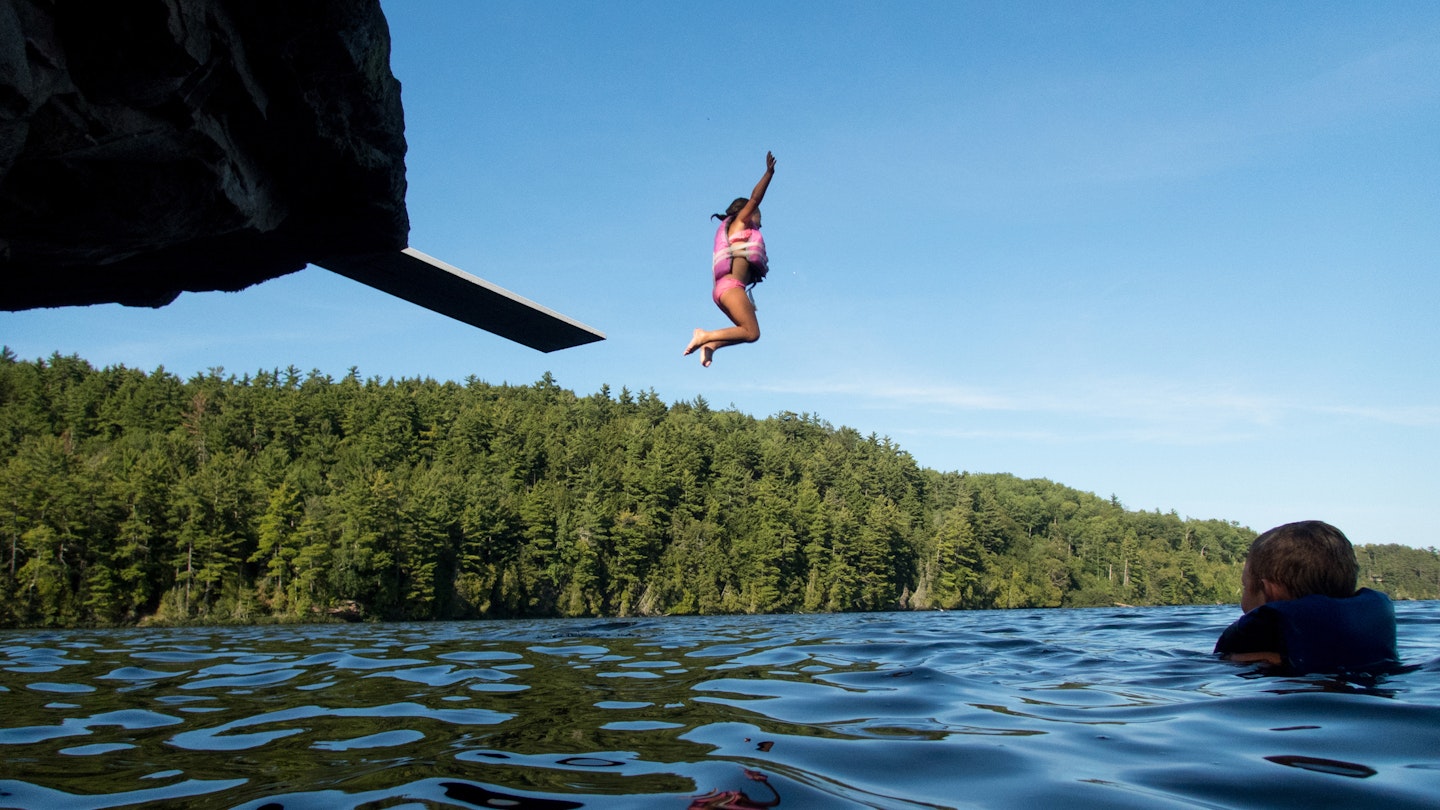Every season in Michigan comes with its own side of magic.
Summertime buzzes with travelers as attractions like the Great Lakes, charming islands, and unspoiled wilderness are at their most accessible. However, there are also vibrant spring flowers, breathtaking fall foliage, and a vast array of winter sports to enjoy, including the chance to witness the Northern Lights.
Here’s a seasonal guide to help you choose the best time to explore the wonders of Michigan.
May to September: The Best Time for Outdoor Adventures
Michigan’s high season kicks off on Memorial Day (the last Monday in May). Adventurers will already be outdoors as major draws, like kayaking along the Pictured Rocks National Lakeshore, are in full swing. Ferries commence more regular departures to popular spots like Beaver Island and Mackinac Island, while summer-only establishments in places like Copper Harbor on the Upper Peninsula (the UP) open their doors.
The weather is predominantly sunny and warm, with temperatures ranging from 76°F (24°C) to 85°F (29°C). This has led to the rise of numerous summer-only outdoor activities, including:
- Shipwreck tours of Thunder Bay National Marine Sanctuary
- Cliff jumping from Marquette’s bay
- Kayaking to Turnip Rock
- Glamping in a blueberry field on the shores of the UP
- Hiking, biking, and other invigorating pursuits
Moreover, Sleeping Bear Dunes National Lakeshore is at its most colorful from May to August, and this is also when the lake is most accessible. Trekkers should note that Isle Royale National Park is open only from mid-April through October, but summer (late June to late September) promises the best weather and moose-sighting opportunities.
March to May and October to November: Ideal for Photographers
Visiting Michigan in the spring (mid-March to mid-June) can be unpredictable, as snow has been known to fall in April and further north, even in May. During the shoulder season, the state is mostly quiet, with few crowds. However, be aware that an increasing number of restaurants and tourist attractions close when the leaves turn, especially in the north.
Few sights compare to the beauty of the state’s wild landscapes and national parks. Photographers should seek spots like the Porcupine Mountains Wilderness in late September, which becomes a canvas of red and copper leaves.
In addition, Michigan is among the few places where the Northern Lights, or Aurora Borealis, occasionally appear. Eagle Harbor on the Keweenaw Peninsula and Headlands International Dark Sky Park, near the Mackinac Bridge, are excellent locations to catch this incredible phenomenon.
Spring presents its own captivating nature displays. Visit Holland, Michigan, in late April or early May to witness tulip fields ablaze with colors, or head to Traverse City when its cherry blossoms transition to full bloom. Moreover, Comerica Park in Detroit comes alive each April with the return of the city’s Major League Baseball team, the Detroit Tigers.
December to February: The Season for Winter Sports
By December, most of Michigan’s warmer-weather attractions, like lighthouse tours and kayak excursions, have closed. While the days grow shorter and temperatures drop, the brave can experience a side of the Wolverine State that few travelers witness.
Several ski resorts, such as Crystal Mountain just outside Traverse City, begin welcoming visitors. The Noquemanon Trail Network in Marquette offers 35 miles of groomed, single-track trails, which become lively with snowshoers and cross-country skiers. Furthermore, Michigan hosts the world’s largest snowmobile race in Sault Ste. Marie, which showcases the state’s winter thrills.
With frozen waterfalls at Pictured Rocks National Lakeshore and dog sledding adventures at Double JJ Resort northeast of Muskegon, there’s plenty of variety for visitors throughout the winter months. Cozy breweries like Bell’s Brewery in Kalamazoo and Founders Brewing Company in Grand Rapids offer warm retreats from the cold. However, it’s worth noting that the further north you travel, the fewer restaurants will be open. Thus, it’s wise to bring groceries and supplies for any northern winter trips.




